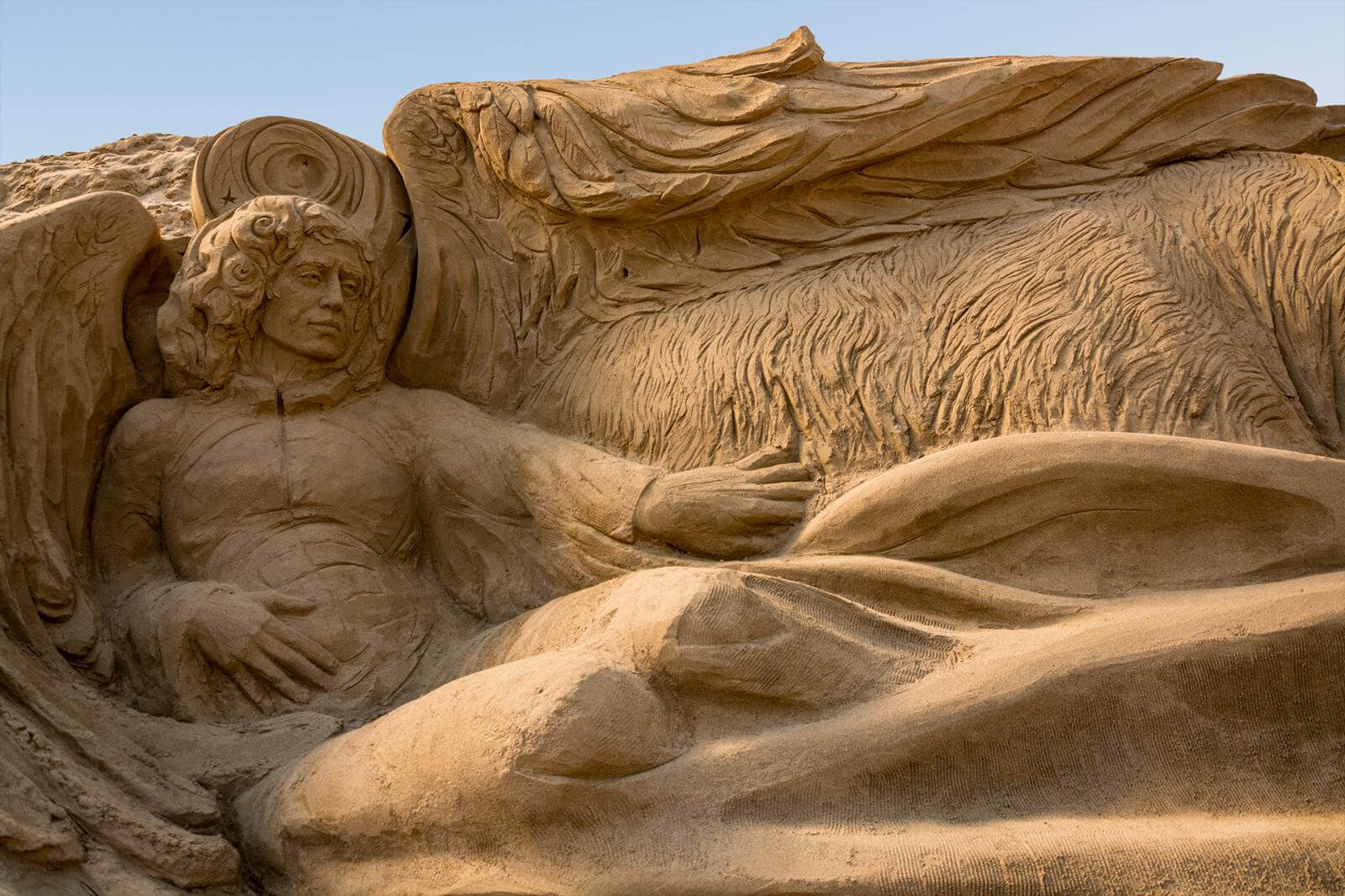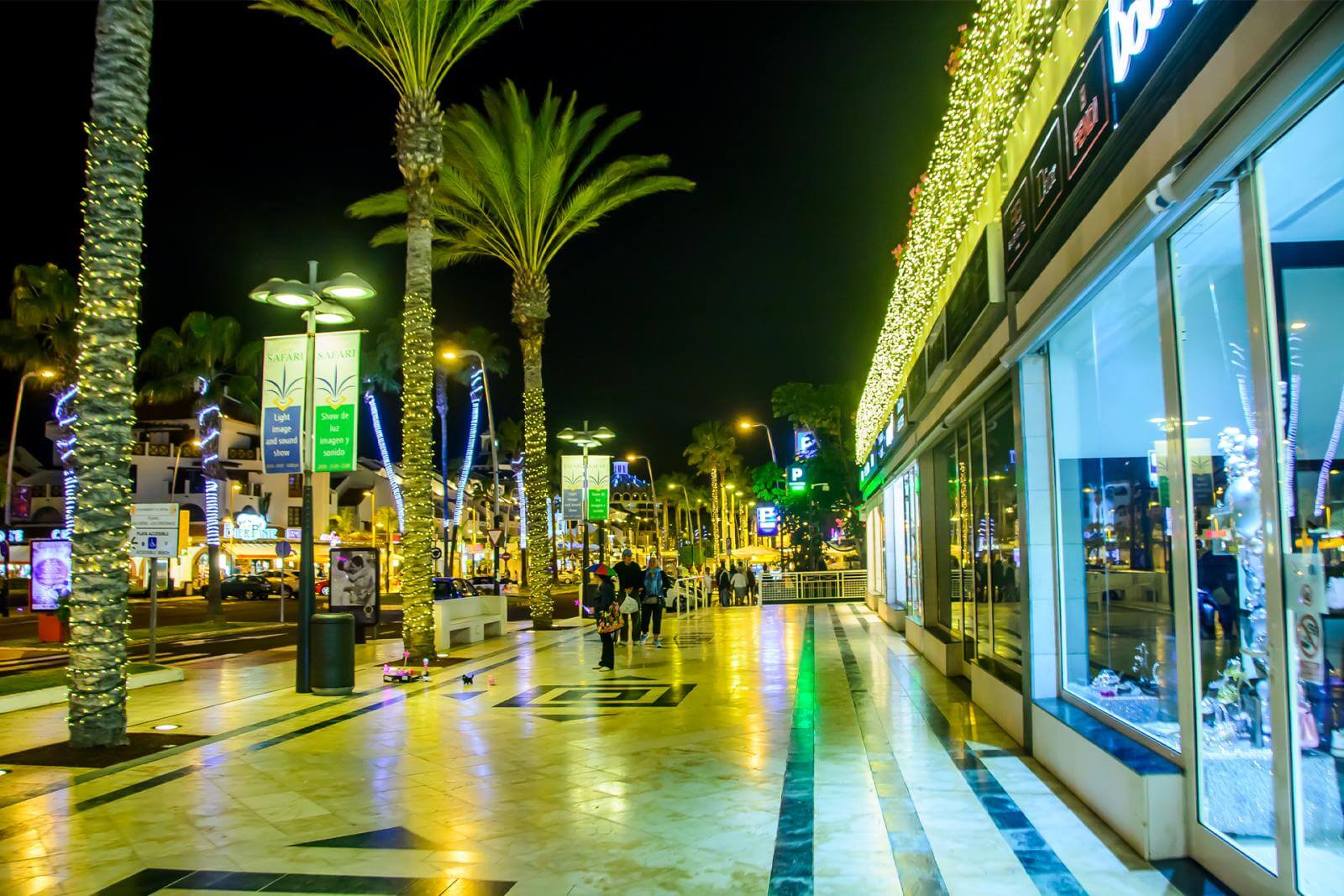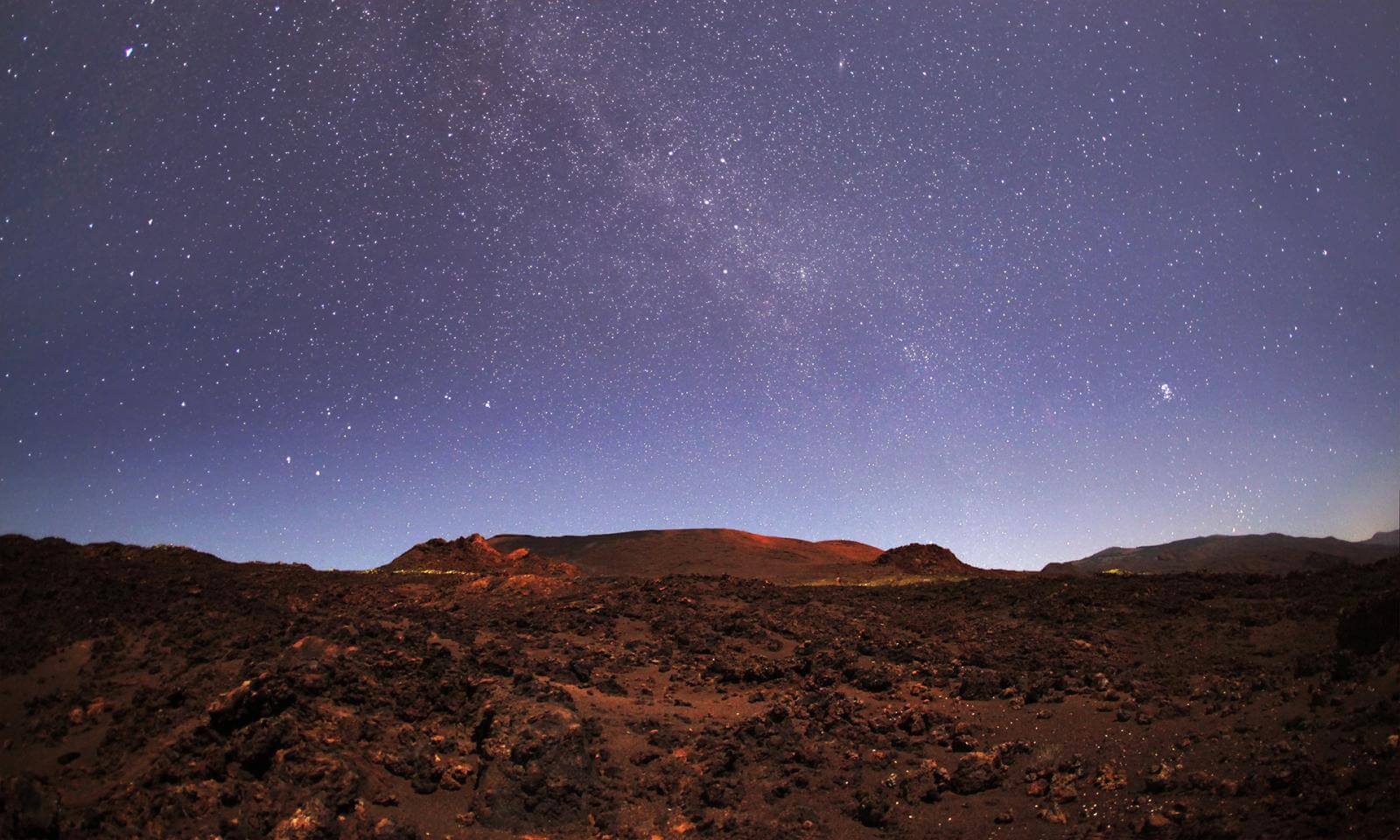The last month of the year deserves to be experienced in the best possible way, with a stylish farewell. December in the Canary Islands is characterised by a warmer Christmas than usual, with an average of 22°C, celebrations on terraces in the open air, 8 hours of sunlight a day, concerts under the stars and naturally, the odd dip in the sea. This might not be the most typical Christmas, by why not start a new tradition?
The Nativity Scene, made of sand
Going on holiday in winter doesn’t mean you have to forfeit the sun. In the middle of December, instead of snowmen, visitors can find an impressive nativity scene made of sand on one of the best urban beaches in Europe, Las Canteras (Gran Canaria). In Tenerife, there is the option of attending the traditional Christmas night concert, held in the open air beside the sea. A magical evening that has become a classic of this festive season.
Shopping before Christmas
In the Canary Islands, consumption tax is just 7%, a much lower rate than that of the rest of Europe. So it’s a great idea to take advantage of your Christmas holidays to make some purchases at the best prices in the islands’ shopping districts or open-air street markets - of which there are many in the capitals, thanks to the good weather - where you can acquire gifts and special souvenirs: artisanal pieces, Canary Islands’ specialities, jewellery, or different, original accessories.
Christmas sweetmeats very typical of the Canary Islands
Travelling to the Canary Islands in December means you can try some of the typical sweetmeats and desserts from each area, or each island. And without doubt the most popular one, essential at every Christmas meal, is trucha stuffed with yellow sweet potato, not to forget the almond cheese of El Hierro, the potato cagajones of Gran
Canaria, the sweet alfajor biscuits of La Gomera, mantecados de vino, La Palma almendrados (macaroons) and homemade almond brittle, very traditional on some islands.
Watch shooting stars
In mid-December, the Canary Islands are one of the best places in which to enjoy the Geminids, one of the brightest meteor showers of the year. No telescope is needed to observe them, as they can be seen with the naked eye. To detect them, all you have to do is position yourself somewhere dark, fix your gaze on an area of the sky and hold it there for a few minutes. And if you can do this from one of the three Starlight Reserves, which are protected from light pollution - La Palma, Fuerteventura or the peaks of Tenerife - so much the better.






